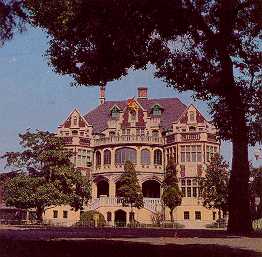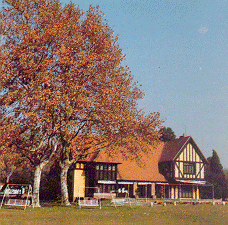 |
 |
 |
|
| |
|
|
 Garden
Houses Garden
Houses |
|
 |
| These
photos of garden houses, perhaps, will leave readers
astonished: in Shanghai's forest of highrises, so many
quiet and elegant houses.
Shanghai's garden houses, as
a accommodation for a higher class, began to rise at
the same time as the emergence of foreign concessions,
the invasion of western colonialists and advancement
of social economy. Soon after it became one of the five
open trading ports, Shanghai grew into China's largest
industrial and commercial center, and so these detached
garden houses were built one after another.
|
|

The
former private residence of Wang Jiangwei, now the
Children's Palace of Changning District
|
|

A garden
house at Xinguo Road, owned formerly by a manager
of Butterfield & Swire

The
Sassoon Villa, built by David Sassoon, an old-line
colonialist
|
The history of garden houses in Shanghai may be roughly
divided into three periods. During the first period--from
the time Shanghai became an open trading port through
World War I, foreign missionaries and capitalists were
not very economically strong, and therefore, could only
afford to build simple, hip-roofed garden houses. But
with the expansion of foreign concessions, quite a few
western-style garden houses gradually emerged each of
a considerable size. Because of Shanghai's cheap labour
period, from 1919 to the eve of the War of Resistance
Against Japan, saw the mushroom growth of apartments built
with idle money and the rapid increase of garden houses.
The third period began in 1937. Most of the earlier garden
houses of this period were built on the western bank of
the Huangpu River and along Kunshan Road in Kongkou District.
Later, with the westward expansion of foreign concessions
garden houses sprouted, a great many of which were scattered
in Xuhui and Changning Districts along Wukang, Hengshan,
Yueyang, Huanan, Yongjia, Hongqiao and West Fuxin Roads.
Of all the detached garden houses, with a total floor
space of 160,000 square metres, thirty-nine percent in
Changning District, nine percent in Luwan District and
the remaining twenty-three percent in other Shanghai districts,
according to statistics. |
|
|
|
|
|
|
|
|
|
|
|
|
 |
 |
 |
|
|
|
|
|
|
|


